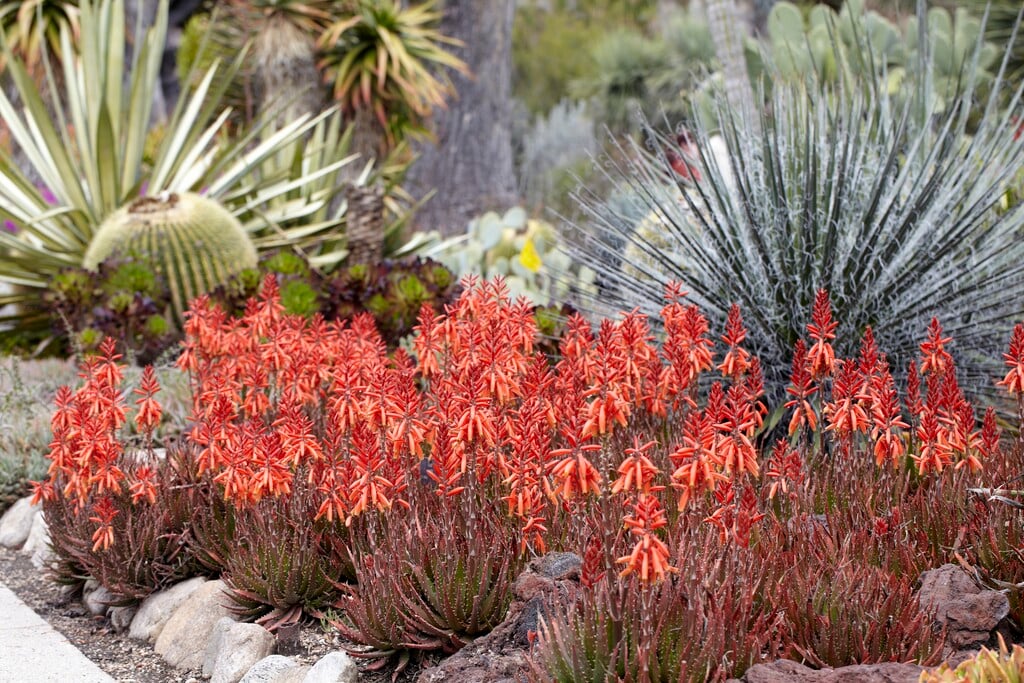Aloe humilis
spider aloe
A low-growing, evergreen perennial succulent, forming clusters of rosettes of spiky blue green leaves. When mature, produces flower spikes to 35cm high, with red or orange tubular flowers, in late winter or early spring This plant is listed on the CITES (Convention on International Trade in Endangered Species) as a protected species. See the RHS pages on importing and exporting plants for further details
Size
Ultimate height
0.1–0.5 metresTime to ultimate height
2–5 yearsUltimate spread
0.1–0.5 metresGrowing conditions
Moisture
Well–drainedpH
Acid, Alkaline, NeutralColour & scent
| Stem | Flower | Foliage | Fruit | |
| Spring | Orange Red | Green Blue | ||
|---|---|---|---|---|
| Summer | Green Blue | |||
| Autumn | Green Blue | |||
| Winter | Orange Red | Green Blue |
Position
- Full sun
Aspect
South–facing or West–facing
Exposure
Sheltered Hardiness
H2Botanical details
- Family
- Asphodelaceae
- Native to GB / Ireland
- No
- Foliage
- Evergreen
- Habit
- Clump forming
- Potentially harmful
- Human/Pets (dogs, cats, rabbits): Harmful if eaten. Wear gloves and other protective equipment when handling For further information and contact numbers regarding pets, see the HTA guide to potentially harmful plants
- Genus
Aloe can be mat-forming or shrubby evergreen perennials, with rosettes of fleshy leaves and small tubular flowers in racemes or panicles
- Name status
Correct
- Plant range
- S Africa (Cape)
How to grow
Cultivation
Grow indoors in a container of peat-free, cacti potting compost, or peat-free, loam-based potting compost with added horticultural grit. Water moderately when in growth, very sparingly when dormant in winter. Apply a general liquid fertiliser monthly from May to August. Can be placed outdoors in summer, see aloe cultivation for further advice
Propagation
Propagate by seed or by division; separate offsets in late spring or early summer
Suggested planting locations and garden types
- Sub-tropical
- Houseplants
- Conservatory and greenhouse
Pruning
No pruning required
Pests
May be susceptible to scale insects and mealybugs
Diseases
Generally disease-free
Get involved
The Royal Horticultural Society is the UK’s leading gardening charity. We aim to enrich everyone’s life through plants, and make the UK a greener and more beautiful place.
